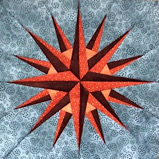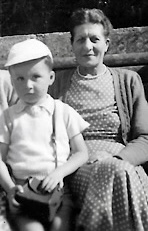Des Lewis will be 77 years old on 18 January 2025
Those who have read these episodic brainstorming reviews of mine must know they are very personal — rough-shod and spontaneous. Synchronicity and anagram mixed. I know they are not professional, never potentially publishable other than in the madness of my head, but I do hope they show grains of dark truth and cosmic panache.

These Des Lewis Gestalt Real-Time Reviews were founded in 2008.

‘What’s the loveliest word in the English language, officer? In the sound it makes in your mouth, in the shape it makes on the page? What do you think? Well now, I’ll tell you: E-L-B-O-W. Elbow.’ — THE SINGING DETECTIVE

“How shall a man find his way unless he lose it?” — Walter de la Mare

To any current genre author I have reviewed before — if you have a new story recently published or soon to be published in a collection or anthology, you may have a review by me of the story that also showcases where it is published. See HERE. (This is because I am no longer well enough to review as many books as I once did.)
Fresh Fictions, free to read HERE.
No AI input in preparation of my texts whatsoever.
THE NEW NONSCENIC
Photos here: https://conezero.wordpress.com/2024/02/24/d-f-lewis-recent-photos-1/
There may be a delay in commencing the review of this book in the wake of my recent Elizabeth Bowen and Robert Aickman projects…
A story 22 luxurious pages long, and long enough to deeply disturb…any longer, would be lethal, and indeed it may still be lethal once I start to understand it properly…
Published in 2021, it contains this sentence…
“I think it was made in Ukraine.”
And, using some of that country’s letters, RIKE is the name of the main protagonist, someone whom the narrator is counselling, but really that narrator is the main protagonist whom the readers slowly become, as we find out we are being counselled not to fully understand what we are being told so as to make it impossible to re-narrate its matter more clearly to others, about the bacon processing plant and their scraps, causing scavenging cats whom we earmark with what I see as peninsulas of gristle clipped from their ears, showing that we have spayed or castrated them, about the Chernobyl trees, about the dance around the fire pit, and tiny folk with their own ears clipped, some of these folk wooden and engrained in our own wooden hearts….as we move along a pipe as a conduit into death. The only thing I want to remember about this work is its music. Other than Rike, all the other characters were stilty or reachy. All skin and grief. I don’t want to become like them. I want to survive atrocity. A case history in man’s cruelty to animal as self. So, I didn’t allow its gestalt to talk to me, by deliberately not reading its last two sentences. Importuned to do so, though, by someone else running their fingers through my hair…
“The core of the dream was a wooden woman, bloody to the elbows,…”
Pingback: “bloody to the elbows” | The Des Lewis Gestalt Real-Time Reviews (from 2008)
Rainer Maria Rilke
from Internet:
“Rilke’s journeys to the Russian Empire in the spring of 1899 and summer of 1900 were an early and formative experience. The second took him south from Moscow to Ukraine, where he visited Kyiv, Kaniv (Taras Shevchenko’s grave on Chernecha Hill), and Poltava. Rilke is known to have been interested at the time in the early, thematically Ukrainian stories of Nikolai Gogol, and to have acquired a copy of Shevchenko’s Kobzar in Russian translation. He did not, however, clearly distinguish between Russia and Ukraine, and his responses to what he saw in Russia and Ukraine were strongly influenced by the turn-of-the-century myth of the simple and god-seeking ‘Russian soul.’”